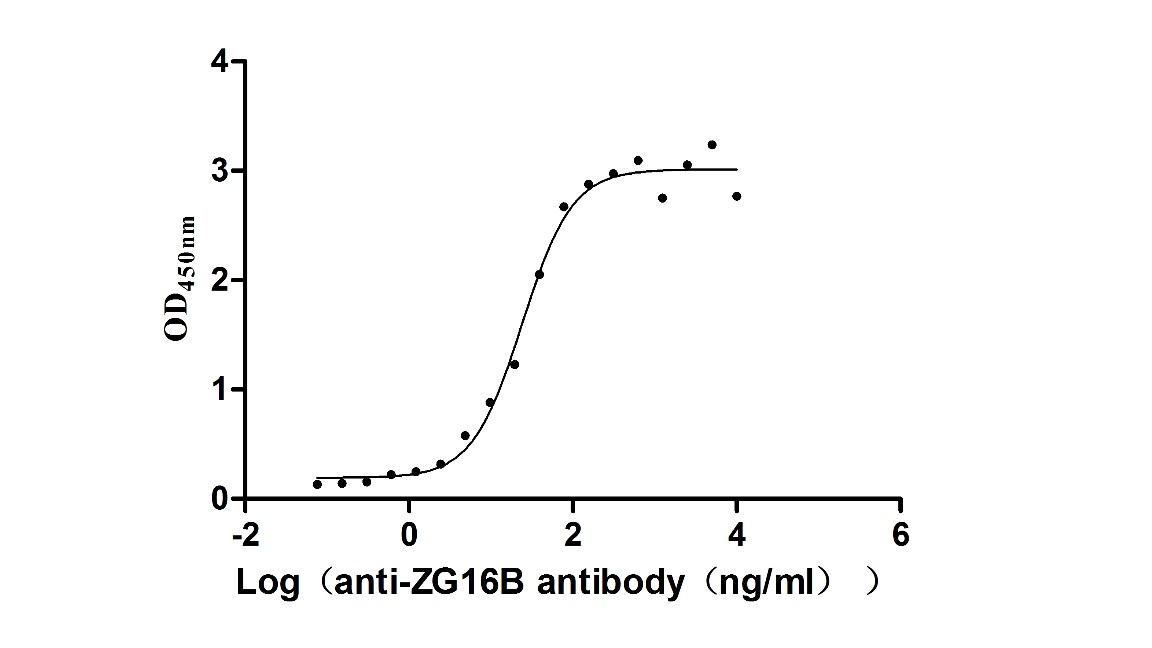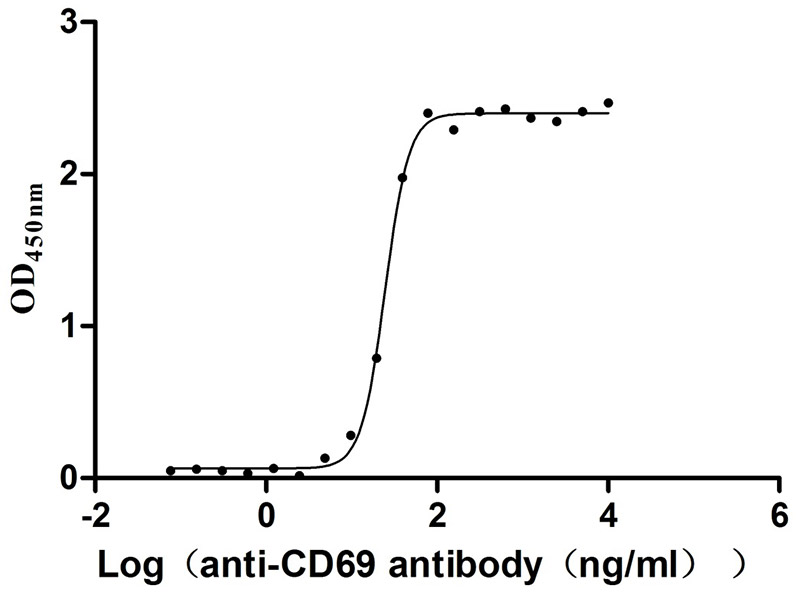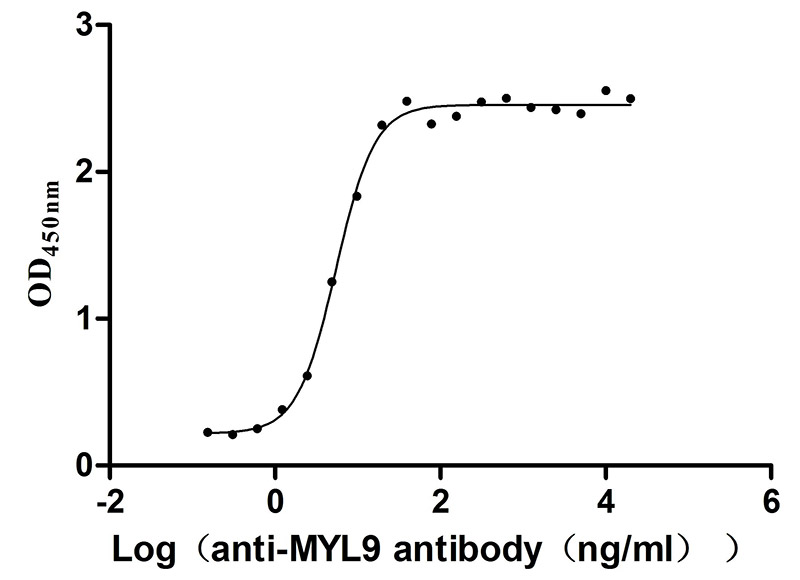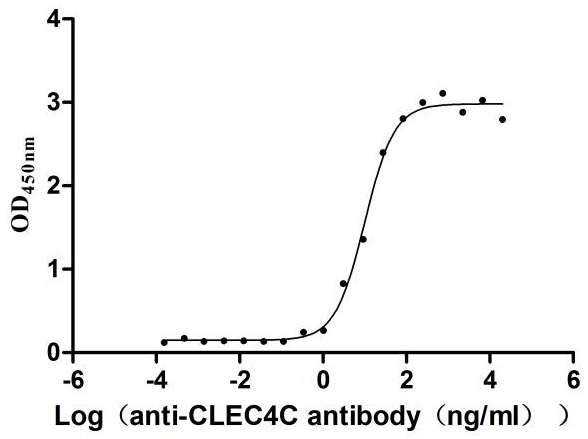Recombinant Mouse Bcl-2-like protein 2 (Bcl2l2)
-
中文名稱:Recombinant Mouse Bcl-2-like protein 2(Bcl2l2)
-
貨號:CSB-YP002620MO
-
說明書:
-
規(guī)格:
-
來源:Yeast
-
其他:
-
中文名稱:Recombinant Mouse Bcl-2-like protein 2(Bcl2l2)
-
貨號:CSB-EP002620MO
-
說明書:
-
規(guī)格:
-
來源:E.coli
-
其他:
-
中文名稱:Recombinant Mouse Bcl-2-like protein 2(Bcl2l2)
-
貨號:CSB-EP002620MO-B
-
說明書:
-
規(guī)格:
-
來源:E.coli
-
共軛:Avi-tag Biotinylated
E. coli biotin ligase (BirA) is highly specific in covalently attaching biotin to the 15 amino acid AviTag peptide. This recombinant protein was biotinylated in vivo by AviTag-BirA technology, which method is BriA catalyzes amide linkage between the biotin and the specific lysine of the AviTag.
-
其他:
-
中文名稱:Recombinant Mouse Bcl-2-like protein 2(Bcl2l2)
-
貨號:CSB-BP002620MO
-
說明書:
-
規(guī)格:
-
來源:Baculovirus
-
其他:
產(chǎn)品詳情
-
純度:>85% (SDS-PAGE)
-
基因名:Bcl2l2
-
Uniprot No.:
-
別名:Bcl2l2; Bclw; Kiaa0271Bcl-2-like protein 2; Bcl2-L-2; Apoptosis regulator Bcl-W; c98
-
種屬:Mus musculus (Mouse)
-
蛋白長度:Full Length of Mature Protein
-
表達(dá)區(qū)域:2-193
-
氨基酸序列ATPASTPDT RALVADFVGY KLRQKGYVCG AGPGEGPAAD PLHQAMRAAG DEFETRFRRT FSDLAAQLHV TPGSAQQRFT QVSDELFQGG PNWGRLVAFF VFGAALCAES VNKEMEPLVG QVQDWMVAYL ETRLADWIHS SGGWAEFTAL YGDGALEEAR RLREGNWASV RTVLTGAVAL GALVTVGAFF ASK
-
蛋白標(biāo)簽:Tag?type?will?be?determined?during?the?manufacturing?process.
The tag type will be determined during production process. If you have specified tag type, please tell us and we will develop the specified tag preferentially. -
產(chǎn)品提供形式:Lyophilized powder Warning: in_array() expects parameter 2 to be array, null given in /www/web/cusabio_cn/public_html/caches/caches_template/default/content/show_product_protein.php on line 662
Note: We will preferentially ship the format that we have in stock, however, if you have any special requirement for the format, please remark your requirement when placing the order, we will prepare according to your demand. -
復(fù)溶:We recommend that this vial be briefly centrifuged prior to opening to bring the contents to the bottom. Please reconstitute protein in deionized sterile water to a concentration of 0.1-1.0 mg/mL.We recommend to add 5-50% of glycerol (final concentration) and aliquot for long-term storage at -20℃/-80℃. Our default final concentration of glycerol is 50%. Customers could use it as reference.
-
儲存條件:Store at -20°C/-80°C upon receipt, aliquoting is necessary for mutiple use. Avoid repeated freeze-thaw cycles.
-
保質(zhì)期:The shelf life is related to many factors, storage state, buffer ingredients, storage temperature and the stability of the protein itself.
Generally, the shelf life of liquid form is 6 months at -20°C/-80°C. The shelf life of lyophilized form is 12 months at -20°C/-80°C. -
貨期:Delivery time may differ from different purchasing way or location, please kindly consult your local distributors for specific delivery time.Note: All of our proteins are default shipped with normal blue ice packs, if you request to ship with dry ice, please communicate with us in advance and extra fees will be charged.
-
注意事項(xiàng):Repeated freezing and thawing is not recommended. Store working aliquots at 4°C for up to one week.
-
Datasheet :Please contact us to get it.
靶點(diǎn)詳情
-
功能:Promotes cell survival. Blocks dexamethasone-induced apoptosis. Mediates survival of postmitotic Sertoli cells by suppressing death-promoting activity of BAX.
-
基因功能參考文獻(xiàn):
- MYC regulates BCL-W expression through its transcriptional regulation of specific miR. PMID: 28094768
- Target-derived neurotrophins coordinate transcription of the antiapoptotic gene bclw with transport of bclw mRNA to the axon, and thereby prevent axonal degeneration in rat and mouse sensory neurons. PMID: 23516285
- By using human cancer cells and mouse embryonic fibroblasts, the study shows that Bcl-w functions in the mitochondria to increase the levels of reactive oxygen species (ROS), which subsequently stimulates the invasion-promoting signaling pathway. PMID: 22570867
- Induction of autocrine Bcl-w signaling through pericytes promoting endothelial cell survival is associated with melanoma development. PMID: 21778339
- Bcl-w(-/-) sensory neurons exhibit mitochondrial abnormalities, including alterations in axonal mitochondrial size, axonal mitochondrial membrane potential, and cellular ATP levels. PMID: 21289171
- amino acid and base sequences of c98 gene (bcl-2 homolog) expressed in newborn epidermal keratinocytes treated with IGF-1 PMID: 14746907
- These data identify Bcl-w as an endogenous neuroprotectant that may have seizure-suppressive functions. PMID: 17702891
- Bcl-w and Grid2 act in distinct pathways to regulate mitochondrial morphogenesis and control Purkinje cell dendrite development and synapse formation. PMID: 18551174
顯示更多
收起更多
-
亞細(xì)胞定位:Mitochondrion membrane; Peripheral membrane protein.
-
蛋白家族:Bcl-2 family
-
組織特異性:Expressed in almost all myeloid cell lines and in a wide range of tissues, with highest levels in brain, colon, and salivary gland.
-
數(shù)據(jù)庫鏈接:
Most popular with customers
-
Recombinant Human Tumor necrosis factor ligand superfamily member 14 (TNFSF14), partial (Active)
Express system: Mammalian cell
Species: Homo sapiens (Human)
-
Recombinant Mouse Semaphorin-4D (Sema4d), partial (Active)
Express system: Mammalian cell
Species: Mus musculus (Mouse)
-
Recombinant Human Angiopoietin-2 (ANGPT2) (Active)
Express system: Mammalian cell
Species: Homo sapiens (Human)
-
Recombinant Macaca fascicularis CD44 antigen (CD44), partial (Active)
Express system: Mammalian cell
Species: Macaca fascicularis (Crab-eating macaque) (Cynomolgus monkey)
-
Recombinant Macaca fascicularis zymogen granule protein 16 homolog B (ZG16B) (Active)
Express system: Mammalian cell
Species: Macaca fascicularis (Crab-eating macaque) (Cynomolgus monkey)
-
Recombinant Human Early activation antigen CD69 (CD69), partial (Active)
Express system: Mammalian cell
Species: Homo sapiens (Human)
-
Recombinant Human Myosin regulatory light polypeptide 9 (MYL9) (Active)
Express system: Yeast
Species: Homo sapiens (Human)
-
Recombinant Human C-type lectin domain family 4 member C (CLEC4C), partial (Active)
Express system: Mammalian cell
Species: Homo sapiens (Human)



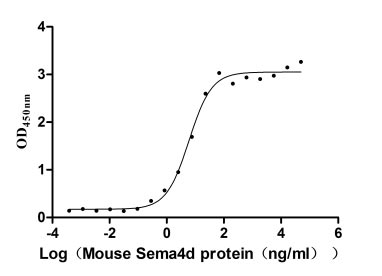
-AC1.jpg)

